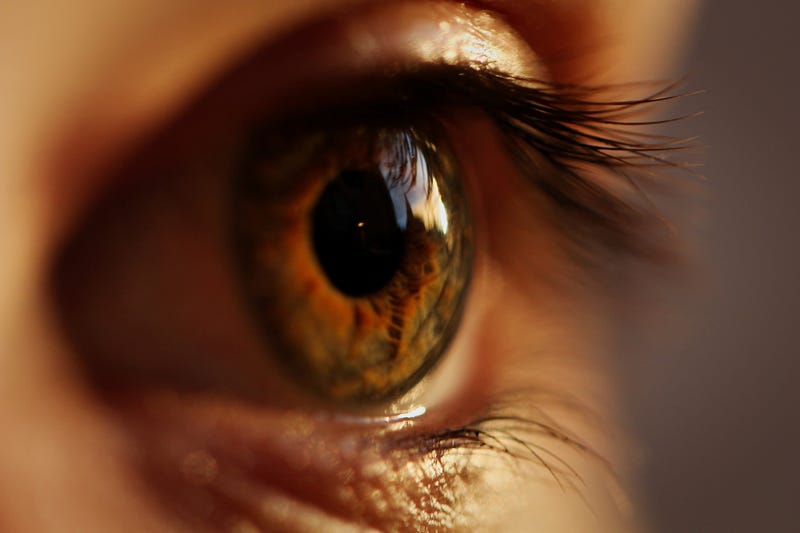A Groundbreaking Battery-Free Photosensor Inspired by the Human Eye
Written on
Chapter 1: Introduction to Innovative Photodetectors
In a recent publication in the open-access journal Science Advances on April 14, 2023, a team of scientists from Pennsylvania State University unveiled a revolutionary type of photodetector that could redefine digital camera design.

This new design draws inspiration from the human retina, where a complex network of nerve cells detects colors—red, green, and blue—and transmits corresponding electrical signals to the brain for interpretation.
Section 1.1: Challenges in Current Sensor Technology
Traditional commercial sensors struggle to identify red, green, and blue hues separately, a task efficiently handled by cone cells in the retina. Most sensors utilize Si- or InGaAs-based broad-spectrum sensor arrays, which capture a wide range of light wavelengths.
Consequently, color filters are necessary to isolate red, green, and blue, leading to increased manufacturing costs and setup complexity. Moreover, these filters can reduce spatial resolution, introducing artifacts like Moiré patterns and color aliasing. To address the “lost pixels,” a digital process known as “mosaicing” is employed, which not only demands larger memory capacity but also slows down camera performance.
Subsection 1.1.1: The Promise of Narrowband Perovskites
In order to replicate the functionality of cone cells, the researchers developed high-quality halide perovskite films. Halides are binary compounds consisting of a halogen (e.g., Cl, F, Br) combined with another element. Perovskites are characterized by their molecular formula of ABX?, resembling the crystal structure of CaTiO? (Zhou et al., 2018).
Halide perovskites are emerging as promising materials for photovoltaic applications, noted for their defect tolerance, high carrier mobility, and exceptional light absorption capabilities. The researchers successfully created ultra-thin (<2 μm) films that absorb light in very narrow bands focused on red, green, and blue wavelengths.
Section 1.2: Advancements in Sensor Configuration
An additional innovation introduced in this study is the unique configuration of the sensors. The narrowband perovskite photodetectors were assembled in an asymmetric p-i-n configuration. This arrangement consists of an intrinsic, undoped semiconductor sandwiched between p-type and n-type semiconductors, allowing generated charges from incoming light to flow through the detector without requiring an external voltage to drive them.
This development could lead to groundbreaking applications such as battery-free cameras or artificial retinas for individuals with vision impairments.
Chapter 2: Neuromorphic Algorithms and Signal Processing
The cone cells in the retina connect to a sophisticated network of nerve cells that preprocess visual signals before they reach the brain. These are referred to as horizontal, bipolar, and amacrine cells, which assist in conserving brain energy by filtering out non-essential information.
Inspired by this biological system, the researchers designed a three-layer neuromorphic network that receives photocurrents generated from red, green, and blue detection, reconstructing the image using machine learning techniques.
One key advantage of employing machine learning for image reconstruction, rather than simply merging the three color channels, is its ability to effectively reduce noise. The algorithm can adapt to varying noise levels across each channel and, through model training, systematically eliminate errors, resulting in high-quality images.
Conclusion: The Future of Photosensing Technology
The research published in Science Advances introduces several groundbreaking advancements in the realm of photosensors, featuring a novel photodetector array configuration inspired by the human retina. By utilizing narrowband perovskite films arranged in an asymmetric p-i-n junction, the scientists developed detectors capable of separately identifying red, green, and blue wavelengths, thereby eliminating the reliance on color filters and digital mosaicing.
Additionally, the implementation of a three-layer neuromorphic network for machine learning-based image reconstruction enables more efficient noise reduction and the elimination of systematic errors, producing high-quality images.
This innovative work holds significant potential for applications such as battery-free cameras and artificial retinas for those experiencing vision loss, shaping the future landscape of camera technology.
More of my work you might like:
From Butterfly Wings to Non-Toxic Nanostructures: The Future of Eco-Friendly Paints
Researchers develop lightweight and sustainable structural colors that do not fade or pollute our waters.
This Is How 3D Printing Is Revolutionizing Thermoelectric Devices
When changing tools leads to creative outcomes.